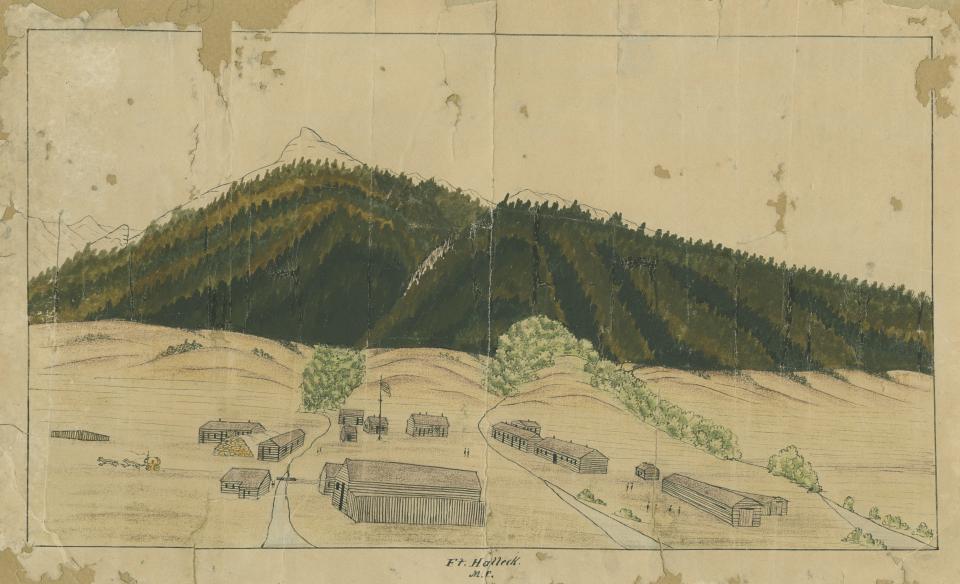Resource 1: Topic Summary
The U.S. Army built Fort Halleck near the north end of Elk Mountain in present south central Wyoming, in July 1862. Its purpose was to guard the Overland Trail, which came north from Colorado Territory and then ran roughly parallel to but 10 to 20 miles south of present Interstate 80. Fort Halleck was the only military post in the 350 miles between La Porte, near present Fort Collins, Colo., and Fort Bridger in the southwestern corner of what’s now Wyoming. There was no railroad yet, and all transportation depended on horses, mules and oxen.
Traffic on the Overland Trail included emigrant wagon trains, freighters and stagecoaches. The stagecoach line offered daily passenger and mail service from points east to Salt Lake City and beyond. Stagecoach businessman Ben Holladay built about 17 stations on the route through present Wyoming, some for changing to fresh horses and others for passengers’ food and lodging.
These stations, their mules, cattle and horses and the wagons, cargo and livestock of freighters and emigrants were all tempting targets for Native warriors. Lt. Brown in his report refers to them only as “Indians.” Probably they were Cheyenne, Arapaho or Lakota Sioux.
The Army, trying to fight the Civil War, had to recruit men for both the Union Army and defense of the western trails. These included the Oregon Trail, where the new transcontinental telegraph was running, and which the Indians kept cutting, as well as the Overland Trail, a newer, slightly shorter route more often used by commercial travelers . (See map.)
Army garrisons were nearly always too small for the jobs they were expected to do. In June 1865, two officers and about 75 men were garrisoned at Fort Halleck.
Tensions between the tribes on one side and the Army and white freighters and travelers on the other were especially high that summer. Only seven months earlier, troops had attacked a peaceful village of Cheyenne and Arapaho on Sand Creek in southeastern Colorado Territory, killing at least 135 people and mutilating their bodies. Lakota and Cheyenne had gathered afterward in large numbers in the Powder River country of what’s now northern Wyoming, and all that spring and summer had been moving south to raid Army and civilian travelers and stage stations along the trails.
At the same time, under heavy pressure from white hunters, the buffalo were fast disappearing from the plains. The tribes needed more and better horses to hunt them—further incentives for warriors to raid stage stations for their livestock.
In spring, summer and early fall, when the warriors increased their raids, soldiers regularly traveled east or west from Fort Halleck to defend a stage station or sometimes to warn an emigrant train. Once, when the number of men at Fort Halleck was greatly reduced by these travels, Army officials required members of a passing wagon train to stay at the fort to help defend it until the soldiers returned.
The major battle involving Fort Halleck soldiers took place 33 miles west of the fort at the Sage Creek stage station. In early June 1865, Indians raided a series of stage stations west of Sage Creek, and Lt. James A. Brown led 31 men to rescue stage station staff and other civilians.
Four years after it was built, Fort Halleck was decommissioned, on July 4, 1866.
Resource 2: Map: Stage Stations on the Overland Trail, Colorado-Wyoming 1862-1868.
Resource 3: June 14, 1865, report of Lt. James A. Brown, Eleventh Ohio Cavalry, to Capt. J. L. Humfreville, Commanding Officer at Fort Halleck, Dakota Territory.

